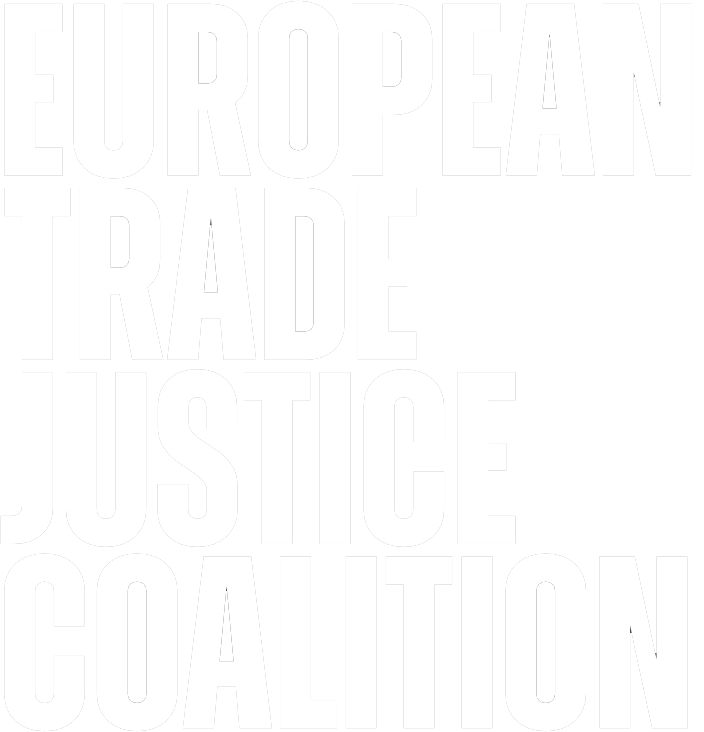
Gambling on a speculative uranium mine
Berkeley vs Spain
For more than a decade, residents have fought against a uranium mining project in Northwestern Spain, which threatened their pastureland and would have left behind a trail of radioactive waste. They appealed to Spanish courts and succeeded in stopping the mine. Now its owner, Australian company Berkeley, is suing Spain under the Energy Charter Treaty. The company is seeking compensation of up to $1 billion – ten times its estimated investment in the project. It appears possible that the mine was never more than a paper tiger to extract cash from financial markets.
Between the ancient town of Salamanca and the Spanish-Portuguese border lies the picturesque Campo Charro region. Holm oak meadows are the typical landscape, with livestock grazing a key income source in the area. “It’s my life,” says Ángel Abarca, a cattle farmer from the region. But he is worried that he could lose his livelihood due to a proposed uranium mining project. “All of this would be worthless – the land, the cows. Because who wants to buy meat that’s radioactively contaminated?” he asks.[1]
Ángel is part of Stop Uranio, a citizen’s initiative, which has fought against the mining project since 2013.[2] Berkeley is an Australian company which calls itself a mining firm, but has never actually mined anything. The company proposes to develop three different uranium deposits in the region, using open-pit mines and chemicals to extract the metal.[3] Berkeley planned to dump the project’s radioactive waste in large holes close to a nature reserve, drinking water extraction sites and a Roman era thermal spa.
“An open-pit uranium mine is brutal. You’re dealing with radioactive materials. All the dust released is distributed throughout the environment… It would contaminate the Yeltes River, and the Yeltes River flows into the Duero… The entire Duero riverbank would be contaminated by the mine.”
Francisco Castejón, fusion researcher at CIEMAT institute, in 2018 [4]
No a la mina, sí a la vida
Stop Uranio teamed up with other Spanish environmental and anti-nuclear groups to build resistance. They held hundreds of meetings with politicians, and countless rallies against the project. They commissioned studies, filed petitions and went to court, challenging permits granted to Berkeley. The slogan “No a la mina, sí a la vida” (“No to the mine, yes to life”) could be seen on many walls.
“It is a very long fight, a David vs. Goliath fight,” Jorge Rodriguez told German media in 2018. Back then, he was the major of Villavieja de Yeltes, a town close to one of the proposed mines.[5] In 2018, 40 municipalities from the Salamanca province signed a manifesto against the planned project.[6]
Nuclear agency and High Court stop project
The people’s resistance worked. In July 2021, Spain’s Nuclear Safety Council recommended rejecting the uranium mining project, citing “the low reliability and high uncertainties” in the risk assessment for the radioactive waste storage facilities.[7]
In 2023, following proceedings lodged by Stop Uranio and the Villavieja de Yeltes city council, two more licenses were annulled by the High Court of Justice Castilla y León, because they violated environmental rules.[8] The verdict was confirmed on appeal in 2024, effectively preventing the construction of key installations by Berkeley.
“We are happy to begin to see the end of the nightmare of uranium mining in our country,” rejoiced Cristina Rois from environmental group Ecologistas en Acción.[9] Stop Uranio also celebrated: “Berkeley mining company out of Campo Charro!!!¡!!!… We will defend our land tooth and nail. Adiooooossssss”.[10]
Berkeley’s true profit mine: a massive ISDS claim
But that was not the end of the story. Berkely is now using a legal backdoor to cash in on its failed project. In May 2024, it sued Spain under the Energy Charter Treaty (ECT). The ECT gives foreign investors in the energy sector sweeping powers to sue states over government actions that they claim have ‘damaged’ their investments. Investors use a parallel arbitration system built on investor-biased tribunals to sue, and the compensation payments governments are forced to pay can be in the billions.
Berkeley argues that the Nuclear Safety Council “acted in a discriminatory and arbitrary manner” when reviewing the company’s plans. Allegedly, the regulator asked for information from Berkeley which it did not request from others for similar projects. The company also claims that the Spanish government “was not following the legally established procedure” when it complied with the regulator’s recommendation and rejected Berkeley’s permit, without considering additional information from the company.[11]
“The Berkeley case could result in two possible scenarios of interest to those with mining investments in Spain:
- The resumption of the mining project; or
- Significant financial compensation to Berkeley.”
Lawyers from specialised arbitration law firm Clyde & Co[12]
According to a May 2024 press release, Berkeley is demanding approximately $1 billion in compensation.[13] That figure is ten times the estimated amount the company spent on developing the mining project – to buy land, pay for equipment and consultants etc (~$100 million).[14]
Could the ISDS claim itself be Berkeley’s true cash cow?[15]
A speculative project from the beginning?
The Berkeley mining project has been considered by some as speculative project that relies on exaggerating its mining prospects to inflate its stock price.[16] Indeed, the valuation of Berkeley on the stock market has already undergone at least two boom and bust cycles.[17]
In 2018, an investigation by newspaper El Salto revealed that three of Berkeley’s former executives were responsible for the UraMin scam in France.[18] This was a story of corruption and fraud. French state-owned uranium company Areva bought Canadian firm UraMin for a staggering $2.5 billion – only to then find out that they had been massively swindled: UraMin’s “valuable” mining assets were actually worthless. The $2.5 billion, however, was gone.[19]
The UraMin business model – hyping a company’s stock market value through continuous good news and rigged feasibility studies – might be replicated by Berkeley. The company even used the same consultancy firm which created manipulative calculations for UraMin for its own feasibility studies.[20]
Rather than generating profits from actual mining, mineral resources are used as security for speculation, generating cash by auctioning shares. “The company creates an image of imminent success and credibility, when in reality its project is little more than a paper tiger,” explains environmental group Ecologistas en acción, in an analysis of speculative mining companies in Spain.[21] In this world, filing billion-dollar compensation claims against governments is just another way to inflate stock market prices. Welcome to ISDS, a gambler’s paradise.
[1] Arte Re: Uran-Mine vor der Haustür – Streit um Spaniens Salamanca-Projekt, min 13:00 and 13:50.
[2] See Stop Uranio’s account on the platform X. For a short overview of the conflict, see: Alba Camazón: Permisos anulados, multas y rechazo social: la mina de uranio de Retortillo que nunca llegó a abrir, El Diario, 12 May 2025. For a detailed up to date overview of developments in English, see: WISE: Salamanca I (Retortillo) project.
[3] For an overview of the project from the company, see: Berkeley Energía: Salamanca Project Update, August 2022.
[4] Quoted in: Martín Cúneo and Irene Martínez, Proyecto Salamanca: la pesadilla del sueño nuclear español, El Salto, 22 March 2018.
[5] Arte Re: Uran-Mine vor der Haustür – Streit um Spaniens Salamanca-Projekt, min 15:10.
[6] Jesús Cruz: Ganaderos, ayuntamientos y vecinos, se manifiestan para pedir el !No a la Mina! de uranio de Berkeley Minera, 13 October 2018.
[7] CSN: The CSN reports an unfavorably authorization of the construction of the manufacturing plant of uranium concentrates from Retortillo (Salamanca), 12 July 2021.
[8] El Tribunal Supremo rechaza el recurso de casación de Berkeley sobre los vertidos del proyecto minero en Retortillo, SALAMANCArtv Al Día, 1 February 2024.
[9] Ecologistas en acción: Celebran el cierre definitivo del proyecto de la mina de uranio en Retortillo, 12 July 2021.
[10] Stop Uranio: Post on the platform X, 7 February 2023.
[11] Berkeley Energía: News Release. Submission of Request for Arbitration initiates Arbitration Proceedings against Spain, 28 May 2024, p. 3.
[12] Marta Maciá et al.: Mining Arbitration Series – A Perspective from Spain, Daily Jus, 3 January 2025.
[13] Berkeley Energía: News Release. Submission of Request for Arbitration initiates Arbitration Proceedings against Spain, 28 May 2024, p. 2.
[14] The company did not respond to a request for information regarding its investments, which is why we made an estimation. By August 2022, Berkeley had invested >€90 million (~ US$92), according to a company presentation. See: Berkeley Energía: Salamanca Project Update, August 2022, p. 2. According to its 2024 annual report to shareholders total company expenses for the business years 2023 and 2024 were around US$13 million – likely not all investments in the Salamanca project. Hence the estimation of approximately US$100 million as total investments in the project by the time Berkeley filed the arbitration.
[15] Berkeley was asked multiple times for comment via e-mail, but never responded to the requests.
[16] Ecologistas en acción: Speculative mining in Spain, December 2019, p. 40-47.
[17] Ecologistas en acción: Speculative mining in Spain, December 2019, p. 46.
[18] Martín Cúneo and Irene Martínez: Proyecto Salamanca: la pesadilla del sueño nuclear español, El Salto, 22 March 2018.
[20] Martín Cúneo and Irene Martínez: Proyecto Salamanca: la pesadilla del sueño nuclear español, El Salto, 22 March 2018.
[21] Ecologistas en acción: Speculative mining in Spain, December 2019, p. 29.






